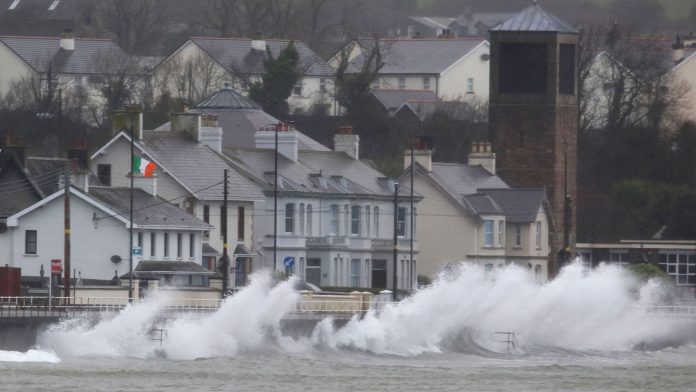Storm Eowyn caused extensive damage across Ireland, Northern Ireland, and Scotland on Friday. It left one person dead and hundreds of thousands without power. The storm also set a new record for the strongest wind gusts in Ireland.
In Ireland, a tree fell on a car, killing the driver. Winds reached speeds of 183 kilometres per hour, breaking an 80-year-old record. The powerful gusts uprooted trees, brought down power lines, and blocked many roads. The storm also destroyed several structures, including an ice-skating rink near Dublin and a modern games centre in County Mayo.
Widespread travel and power disruptions
By Friday evening, authorities lifted red weather warnings in Ireland and Scotland. However, officials still urged the public to take caution.
Scotland’s Deputy First Minister, Kate Forbes, advised people to avoid unnecessary travel. She said staying at home reduced risks.
The storm disrupted air travel across the region. Dublin, Belfast, Aberdeen, Edinburgh, and Glasgow airports cancelled flights. Dublin Airport reported over 230 flight cancellations but resumed operations by 0930 GMT. Many schools in affected areas remained closed. Train services, including ScotRail, and ferries also suspended operations.
The storm cut power to 715,000 homes and businesses in Ireland. In Northern Ireland, 93,000 properties experienced outages. Scotland saw 22,000 homes lose electricity due to fallen trees and damaged power lines.
Rare storm phenomenon and emergency alerts
The UK Met Office identified a rare weather phenomenon called a “sting jet” over Ireland. This intense wind system, with speeds over 160 kilometres per hour, also appeared during the 1987 “Great Storm” in England, which killed 18 people.
Ireland’s weather service, Met Éireann, confirmed the storm broke the nation’s previous wind speed record of 182 kilometres per hour, set in 1945. In the UK, the highest gust reached 149 kilometres per hour in Northumberland, though the UK’s all-time record of 228 kilometres per hour from 1989 remains unbroken.
Authorities issued emergency alerts to 4.5 million UK residents ahead of the storm. This marked the system’s largest use to date. The Environment Agency also warned of possible flooding in southern and central England in the coming days.
Although scientists have linked stronger storms to human-driven climate change, there is no direct evidence linking Storm Eowyn to this trend.
